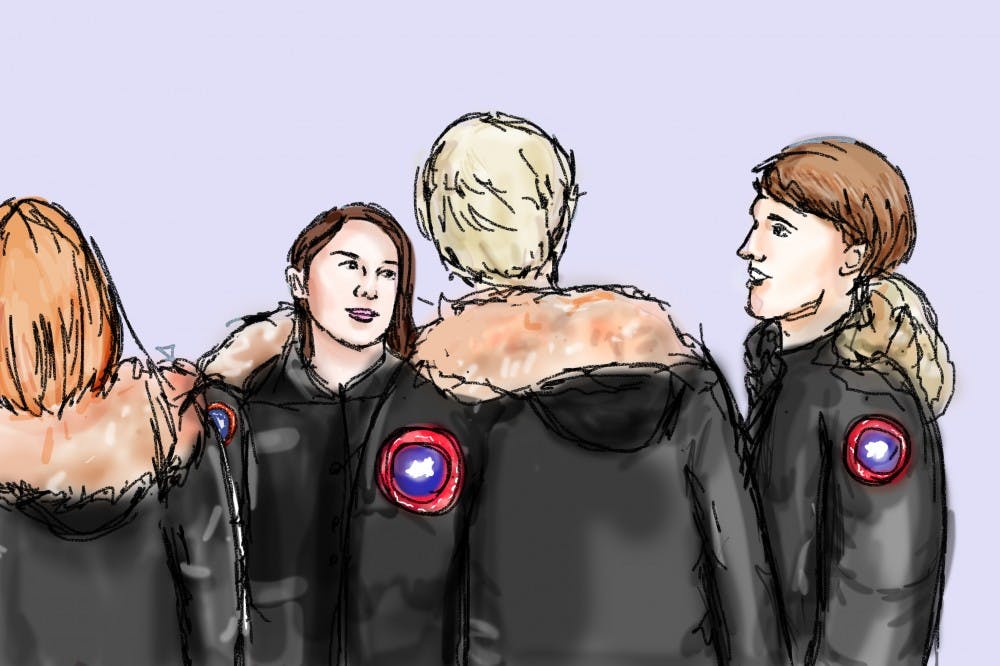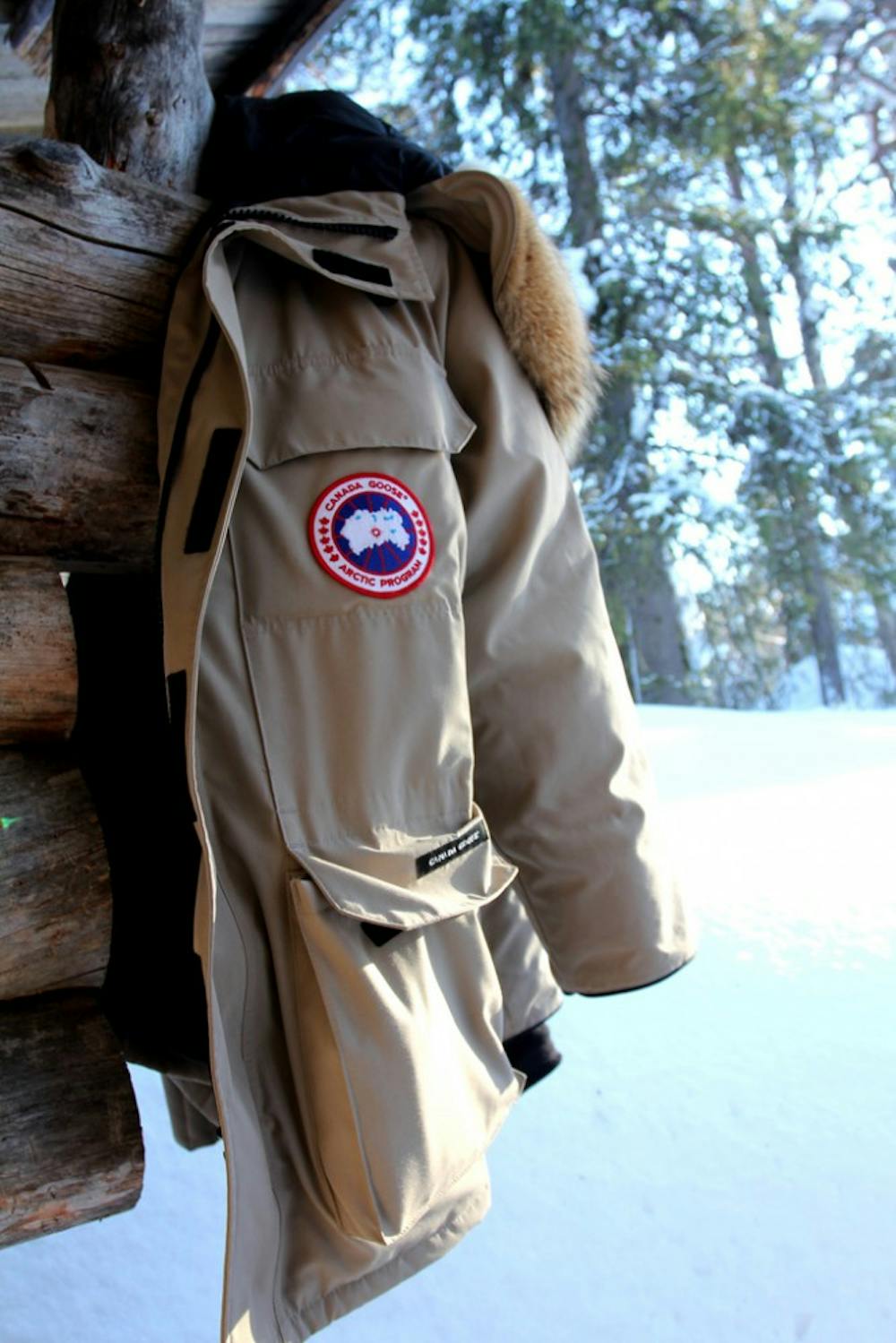
Joking about Canada Goose jackets has been a staple throughout the various Ivy League meme pages. The popular black parka with the fur-lining on its hood has become a recent fad among Ivy League teens. My friends and I had a running joke of trying to count all the Canada Geese we've seen on Locust Walk.
Owning one of these jackets can cost as much as $1,495 for men and $1,695 for women. They have become much more than a stylish piece of fashion — they are a symbol of status and wealth on campus.
However, something that is not often talked about is the process it takes to make one. The red, white, and blue logo displaying the “inverted North Pole” has become synonymous with animal cruelty.
The warm hoods of these parkas are lined with fur of wild coyotes that have been trapped, killed, and skinned.
Ultimately, students have the right to buy whatever clothes they please. I’m not saying to throw away or burn your jacket, but rather, I hope you will be more conscientious with your future purchases.
Engineering junior Jake Welde, a board member of Penn Animal Advocacy, said that the fur hoods are “trophies” that serve little purpose.
“No one you know walking around Penn’s campus needs a coat that can … insulate them in the Arctic conditions that Canada Goose has advertised that it’s designed for,” Welde said.
People for the Ethical Treatment of Animals (PETA) has been vocal about protesting Canada Goose for a while now, especially when it came to the 2016 grand opening of one of the Canada Goose stores in the SoHo, N.Y. fashion district. PETA claims it is wrong to own one of these jackets because “Animals trapped for their fur can suffer for days and face blood loss, frostbite, gangrene, and attacks by predators. If they aren’t dead when the trapper returns, they may be shot, strangled, stomped on, or bludgeoned to death.”
While most of the Penn student body was taking finals, PETA demonstrations were happening all over New York City in December 2017. In the subways, fake goose and coyote carcasses hung from the hand railings while protesters spewed facts about the mistreatment of the animals and the lack of ethics surrounding the way they die. On the streets, PETA supporters approached visible Canada Goose wearers and asked them if they knew what they were wearing. Once they heard what PETA had to say about the process behind obtaining the fur, some even took off the fur lining part of their jackets.

“This seems like a particularly horrendous level of abuse … for a fashion statement,” Welde said.
Welde said that the popularity of Canada Goose is surprising since he felt that the public had moved away from buying fur. However, according to the Fur Information Council of America, fur sales have increased by 50 percent from 1991 to 2014.
According to Canada Goose’s company policy, they “believe all animals are entitled to humane treatment in life and death, and are deeply committed to the responsible use and ethical sourcing of all animal materials in our products. We do not condone any willful mistreatment and neglect of animals or acts that maliciously cause undue pain, injury or suffering.” They deny PETA’s claims and graphic video investigations, such as when PETA went undercover to expose how some geese were mishandled and crushed at one of Canada Goose's down suppliers. Canada Goose released a statement to Global News saying that the farm is indeed one of their suppliers, but those geese were not related to the supply chain of their company.
Canada Goose justifies their killings of coyotes due to overpopulation in North American regions and how they can be seen as pests to “farmers, livestock, and sometimes people,” even though coyote attacks on humans are rare in numbers. Supporters of the company claim that the new “traps” that coyotes fall into are meant to be less painful. Adam M. Roberts, the former CEO of Born Free USA, wrote a Huffington Post article that refutes Canada Goose’s policy. Roberts writes, “Canada Goose declares that it only uses ‘ethically sourced down and fur.’ I assume that means coyotes who have died of natural causes — because to trap, shoot, slaughter, and skin a coyote to line a coat is not remotely ethical.”
At the end of the day, I am not telling you what or who you should believe. But there should be a clear understanding that these animals are suffering at the expense of an overpriced luxury coat. There are down-free and fur-free alternatives that will still keep you warm in the Northeast. The next time you pull your Canada Goose hood over your head, think about the animal that died to keep you warm.

CARLOS ARIAS VIVAS is a College freshman from Stamford, Conn., studying communication. His email address is cariasv@sas.upenn.edu. "Convos with Carlos" usually appears every other Wednesday.
The Daily Pennsylvanian is an independent, student-run newspaper. Please consider making a donation to support the coverage that shapes the University. Your generosity ensures a future of strong journalism at Penn.
Donate




